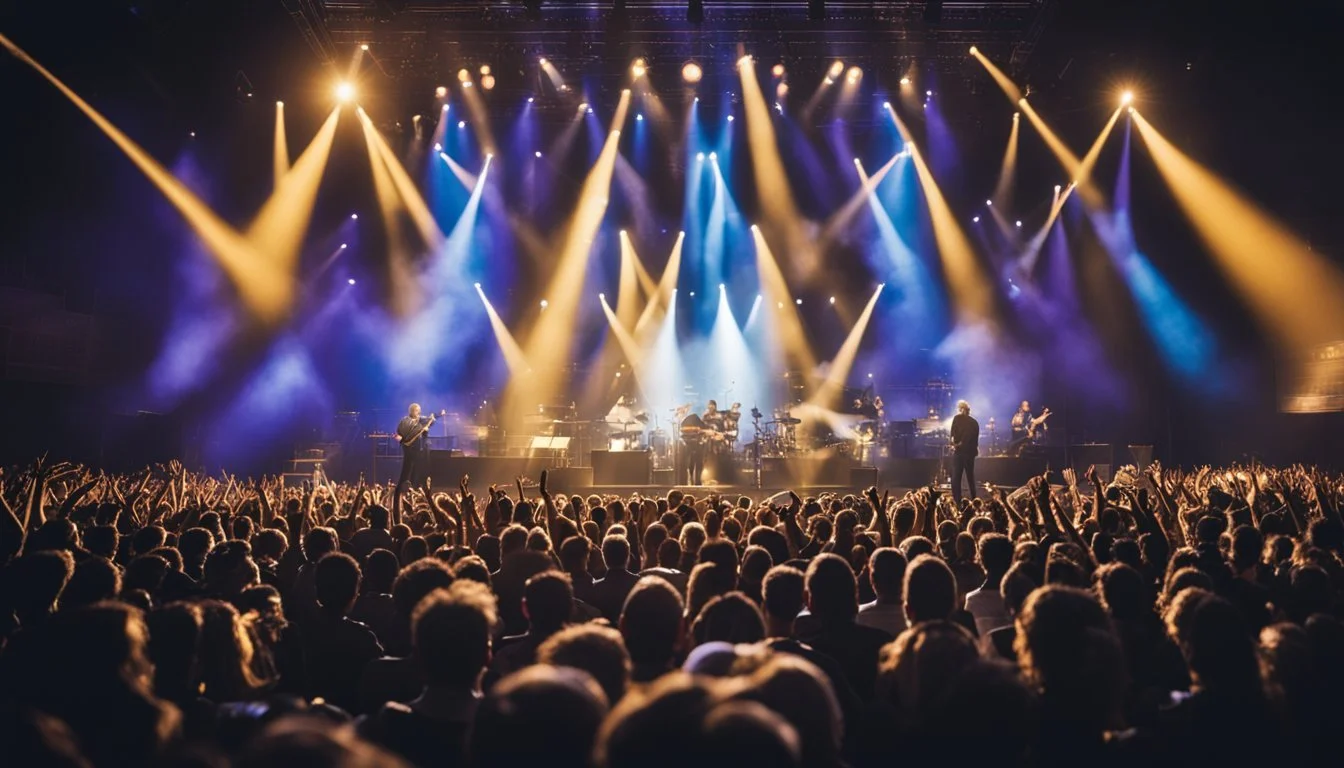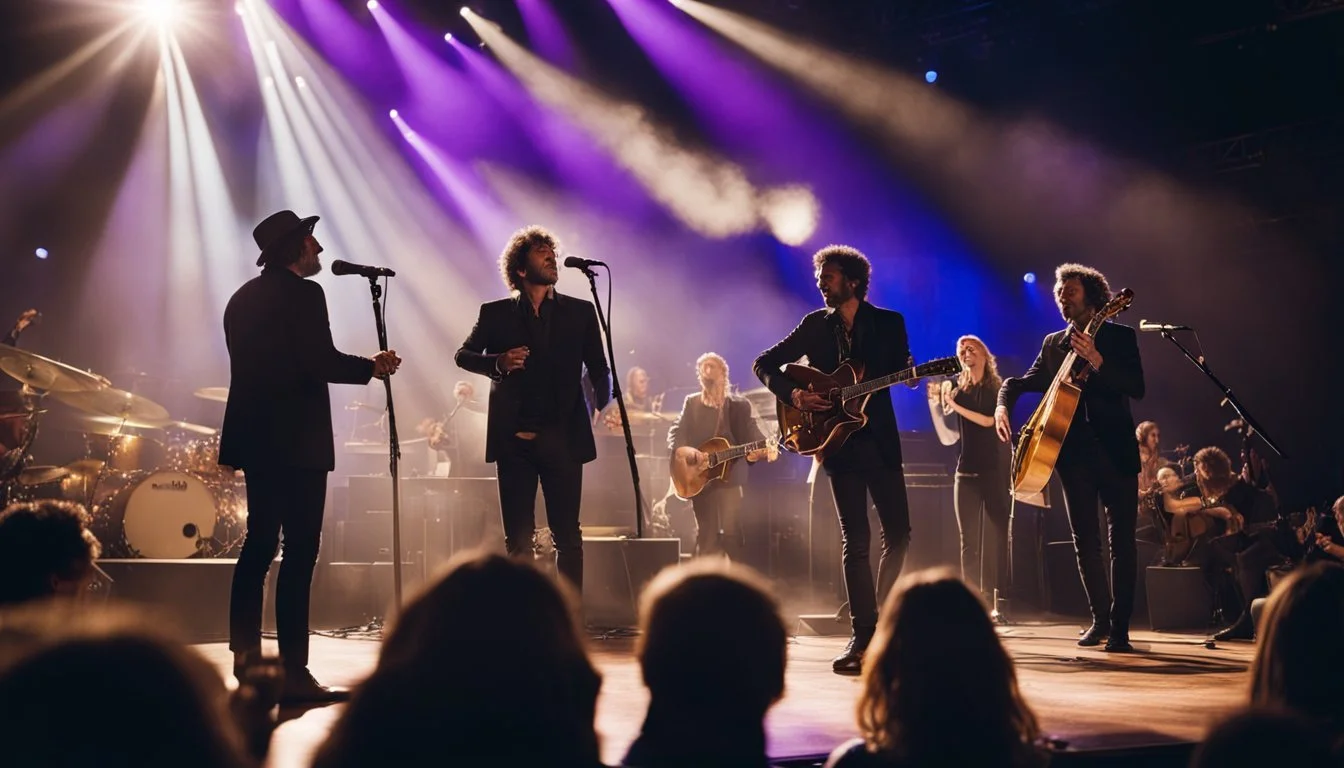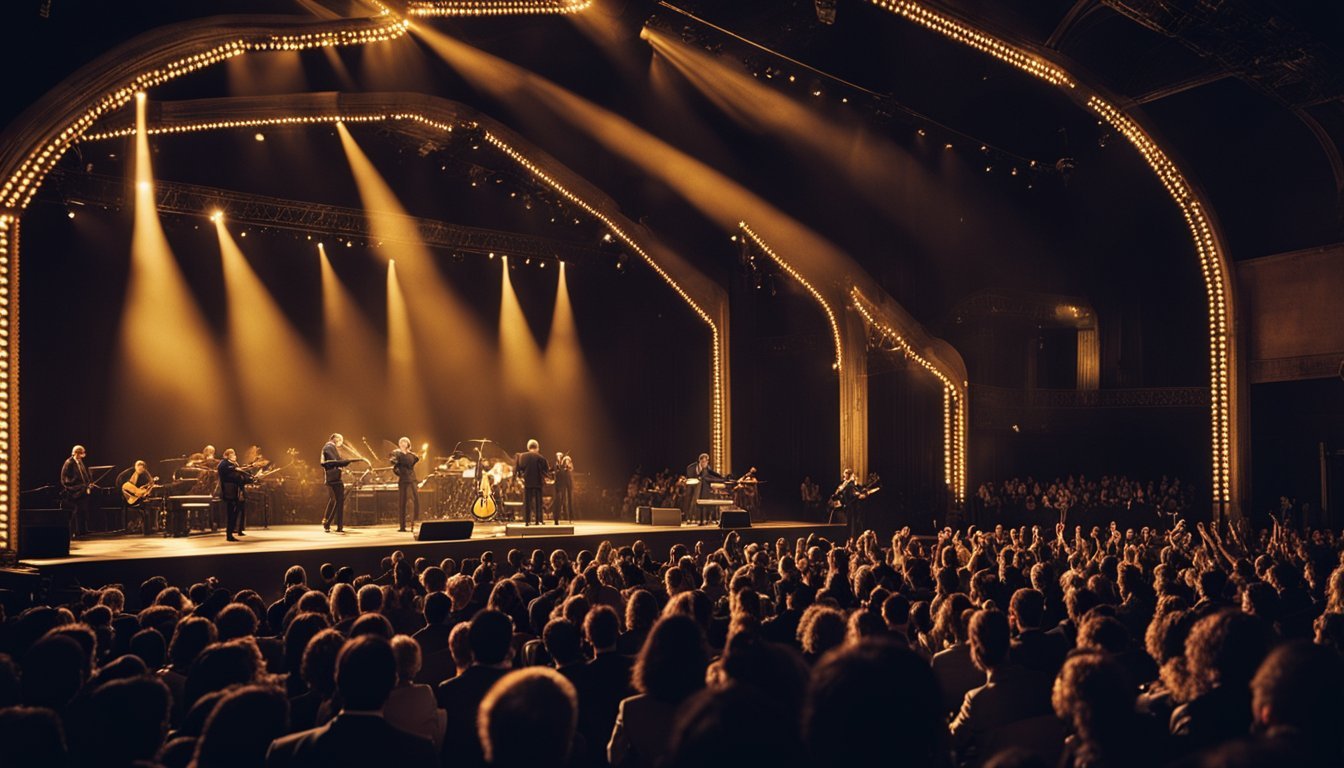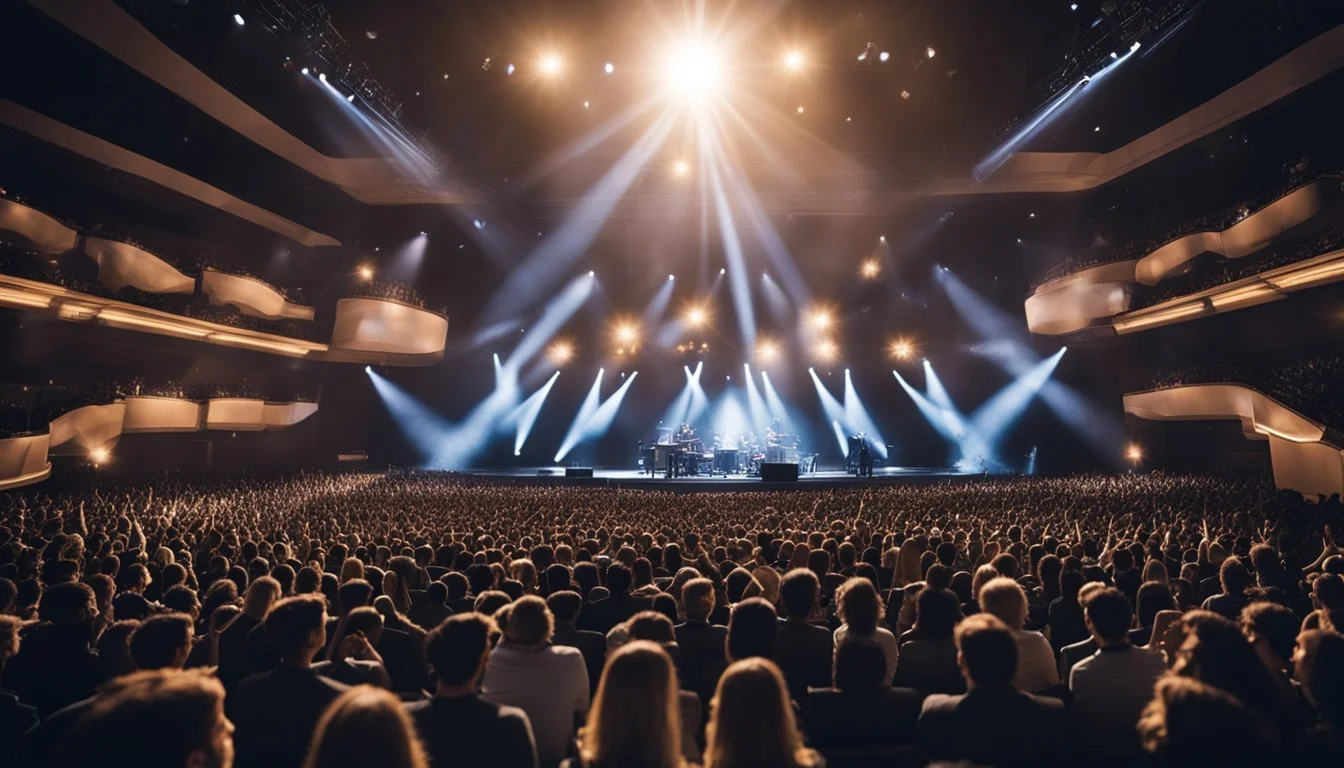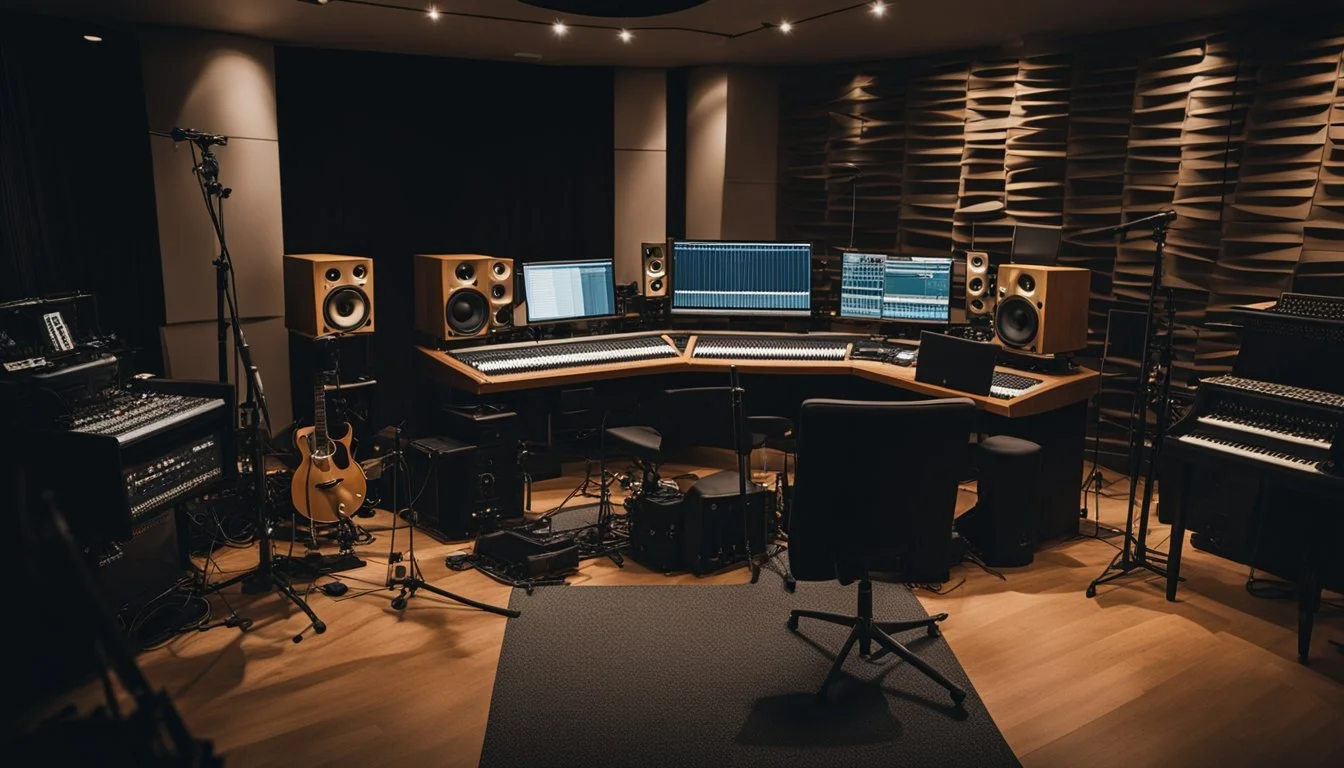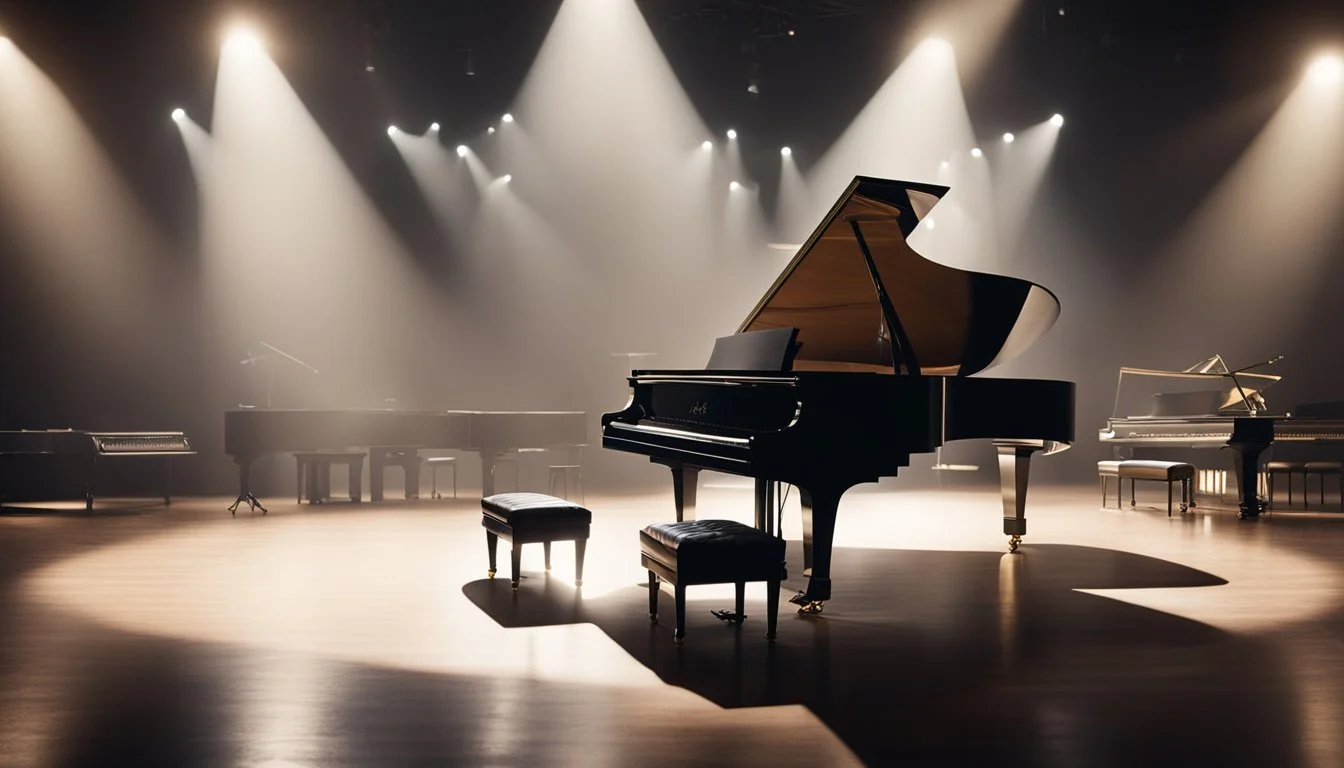Scorsese Role in Shaping The Last Waltz Examines Director Impact on Concert Film
Martin Scorsese's involvement in "The Last Waltz" blurred the lines between artist and documentarian. The 1978 film captured The Band's farewell concert, but Scorsese's creative choices elevated it beyond a typical concert documentary.
Scorsese's artistic vision transformed "The Last Waltz" into a cinematic experience that redefined the concert film genre. He employed techniques more commonly associated with narrative filmmaking, including carefully planned camera movements and staged performances. This approach sparked debate about the film's authenticity as a documentary.
The director's background in both fiction and non-fiction filmmaking uniquely positioned him to craft a hybrid work. Scorsese's artistic sensibilities merged with The Band's musical prowess to create a film that stands as both a historical document and a creative interpretation of a pivotal moment in rock history.
The Conception of 'The Last Waltz'
The Last Waltz emerged from a pivotal moment in The Band's history, blending artistic vision with practical considerations. Its inception marked a turning point for both the group and the music documentary genre.
The Significance of the Concert
The Band's farewell concert at San Francisco's Winterland Ballroom on Thanksgiving Day 1976 was a momentous occasion. It signaled the end of an era for one of rock's most influential groups. The venue held special meaning, as it was where The Band had played their first show as a headlining act.
The concert's timing on Thanksgiving added a symbolic layer, creating a sense of gratitude and closure. It brought together an impressive lineup of guest performers, showcasing The Band's far-reaching influence in the music world.
The event was designed to be more than just a typical rock show. It aimed to celebrate The Band's 16-year journey and their impact on American music.
The Glimmer of an Idea
The concept for filming the concert arose from Robbie Robertson's desire to document The Band's final performance. He had been impressed by Martin Scorsese's use of rock music in "Mean Streets" and saw potential in collaborating with the young director.
Scorsese, though primarily known for his narrative films, had a deep passion for music. He recognized the unique opportunity to capture a significant moment in rock history.
The idea evolved from a simple concert recording to a more ambitious project. Scorsese envisioned a film that would blend live performances with interviews and staged sequences, creating a comprehensive portrait of The Band.
This approach laid the groundwork for what would become a landmark in concert film-making, elevating "The Last Waltz" beyond a mere recording of a live event.
Martin Scorsese's Vision
Martin Scorsese brought his distinctive cinematic style to "The Last Waltz," blending his passion for music with his filmmaking expertise. His vision shaped the documentary's unique approach to capturing live performances.
From Music to Documentary
Scorsese's deep appreciation for music influenced his documentary style. He aimed to capture the essence of The Band's farewell concert, not just as a performance, but as a cultural moment. The director's musical knowledge allowed him to anticipate key moments and highlight subtle nuances in the performances.
Scorsese collaborated closely with cinematographer Michael Chapman to create visually striking shots. They used multiple cameras to capture different angles and perspectives, ensuring no significant moment was missed.
Scorsese's Directorial Approach
Scorsese's approach to "The Last Waltz" went beyond simply recording a concert. He meticulously planned camera movements and lighting to enhance the visual experience. The director incorporated intimate backstage interviews, providing context and depth to the performances.
Scorsese's attention to detail extended to the sound recording. He worked closely with audio engineers to ensure the music was captured with the highest fidelity possible. This focus on audio quality set "The Last Waltz" apart from many other concert films of its time.
The director's vision also included carefully crafted editing techniques. He seamlessly blended live performances with interview segments, creating a narrative flow that kept viewers engaged throughout the film.
The Band's Journey
The Band's rise to fame and internal dynamics shaped their musical journey. From backing Bob Dylan to becoming celebrated artists in their own right, the group's story is one of creative collaboration and interpersonal challenges.
Rise to Fame
The Band began as The Hawks, backing rockabilly singer Ronnie Hawkins. In 1965, they caught the attention of Bob Dylan and toured with him as he transitioned to electric music. This exposure propelled them into the spotlight.
In 1968, The Band released their debut album "Music from Big Pink," featuring the hit "The Weight." Their unique blend of Americana, folk, and rock resonated with audiences and critics alike.
The group's self-titled second album, released in 1969, further cemented their status. Songs like "Up on Cripple Creek" and "The Night They Drove Old Dixie Down" became classics.
The Dynamic Within
The Band's core consisted of Robbie Robertson, Levon Helm, Rick Danko, Richard Manuel, and Garth Hudson. Each member brought distinct talents to the group.
Robertson emerged as the primary songwriter, while Helm's drumming and vocals provided a Southern authenticity. Danko's bass and tenor voice added depth, Manuel's piano and emotive singing brought soul, and Hudson's multi-instrumental skills rounded out their sound.
Tensions arose over songwriting credits and creative direction. Robertson's growing prominence as the main composer created friction, particularly with Helm. These internal struggles ultimately contributed to the group's decision to stop touring in 1976.
Legendary Collaborations
The Last Waltz featured an impressive lineup of musical icons joining The Band on stage. These collaborations created unforgettable moments and showcased the interconnectedness of the 1970s rock scene.
Musical Synergy on Stage
The Band's farewell concert highlighted their ability to blend seamlessly with other artists. Bob Dylan, a longtime collaborator, performed several songs including "Forever Young" and "Baby Let Me Follow You Down." Van Morrison electrified the audience with "Caravan," his energetic performance becoming one of the film's most memorable moments.
Neil Young delivered a powerful rendition of "Helpless," though his performance required some post-production edits. Joni Mitchell contributed her haunting vocals to "Coyote," while Muddy Waters brought classic blues to the stage with "Mannish Boy."
Guest Appearances
The Last Waltz featured an eclectic mix of guest performers. Eric Clapton showcased his guitar prowess on "Further On Up the Road," despite a brief technical issue with his guitar strap. Neil Diamond surprised audiences with "Dry Your Eyes," a song he co-wrote with Robbie Robertson.
The Staple Singers added gospel flair to "The Weight," creating a unique version of The Band's signature song. Emmylou Harris joined in for "Evangeline," her crystal-clear voice complementing The Band's rootsy sound.
These collaborations demonstrated The Band's versatility and their respected position within the music community. Each guest brought their distinct style, creating a rich tapestry of musical genres and influences.
Cinematic Style & Techniques
Martin Scorsese's masterful direction of "The Last Waltz" showcases his innovative approach to concert filmmaking. His techniques elevate the documentary beyond a simple recording of a musical event.
Scorsese's Camera Work
Scorsese collaborated with cinematographers Michael Chapman and Vilmos Zsigmond to create a visual spectacle. They employed fluid camera movements that captured the energy of The Band's performance.
Tracking shots and sweeping crane moves added dynamism to the concert footage. Close-ups of the musicians' faces and instruments provided intimacy, allowing viewers to connect with the performers.
The film's lighting design was meticulously planned. Scorsese used warm, rich tones to enhance the nostalgic atmosphere of the farewell concert. This attention to visual detail transformed the stage into a cinematic set.
Innovations in Filmmaking
Scorsese broke new ground in concert film production with "The Last Waltz." He introduced scripted sequences and interviews, blending documentary and narrative techniques.
The director used multiple camera setups to capture different angles simultaneously. This approach allowed for seamless editing between shots, creating a more immersive viewing experience.
Scorsese incorporated behind-the-scenes footage and rehearsal clips. These elements provided context and depth to the concert performances. The film's structure, alternating between live music and intimate moments, set a new standard for music documentaries.
Cultural and Historical Context
The 1960s and 1970s marked a transformative period in American music and culture. This era saw the rise of rock as a dominant force and the emergence of San Francisco as a pivotal hub for musical innovation.
The Era of Rock and Its Evolution
Rock music exploded in popularity during the 1960s, evolving from its roots in blues, folk, and early rock 'n' roll. The British Invasion, led by bands like The Beatles and The Rolling Stones, catalyzed this growth. American artists responded with their own unique styles.
Woodstock in 1969 became a defining moment, showcasing the power of rock music as a cultural phenomenon. The festival featured iconic performances by Jimi Hendrix, The Who, and Janis Joplin.
As the 1970s progressed, rock diversified into subgenres like hard rock, progressive rock, and punk. This evolution reflected broader societal changes and artistic experimentation.
San Francisco's Music Scene
San Francisco emerged as a hotbed of musical creativity in the mid-1960s. The city's counterculture movement fostered a unique blend of rock, psychedelia, and folk music.
Bands like Jefferson Airplane, Grateful Dead, and Big Brother and the Holding Company defined the "San Francisco Sound." Their music often incorporated elements of blues, jazz, and world music.
The famous Fillmore Auditorium, run by promoter Bill Graham, became a legendary venue for both local and touring acts. It hosted a diverse range of artists, from rock bands to soul and R&B performers.
San Francisco's influence spread beyond its borders, shaping the sound and ethos of American popular music throughout the late 1960s and early 1970s.
Reception and Impact
"The Last Waltz" garnered widespread acclaim and left an indelible mark on music documentaries. Critics praised Scorsese's innovative approach, while filmmakers drew inspiration from the film's techniques.
Critical Acclaim
"The Last Waltz" received overwhelmingly positive reviews upon its release. Critics lauded Scorsese's direction and cinematography, praising his ability to capture the energy of live performance. The film's intimate backstage moments and candid interviews were particularly well-received.
Many reviewers noted the documentary's artful blend of concert footage and studio performances. The New York Times called it "a brilliant documentary" that transcended the typical concert film format.
Influence on Music Documentaries
Scorsese's work on "The Last Waltz" set a new standard for music documentaries. The film's use of multiple cameras and careful editing techniques influenced countless concert films that followed.
Filmmakers adopted Scorsese's approach of interspersing interviews with performance footage. This style became a template for music documentaries, allowing artists to provide context and personal insights alongside their music.
"The Last Waltz" also demonstrated the potential for concert films to be cinematic experiences in their own right, encouraging directors to approach music documentaries with greater artistic ambition.
Technical Aspects of Filming
Martin Scorsese employed innovative filming techniques and collaborated with skilled cinematographers to capture the concert's energy and atmosphere. The production utilized multiple film formats and has undergone restoration to preserve its visual and audio quality for modern audiences.
The Role of Cinematographers
László Kovács, Michael Chapman, and Vilmos Zsigmond brought their expertise to "The Last Waltz." These renowned cinematographers worked closely with Scorsese to achieve his artistic vision. They utilized a mix of handheld and stationary cameras to capture both the performers' intensity and the audience's reactions. The cinematographers' skillful use of lighting enhanced the mood, highlighting the musicians' expressions and creating a sense of intimacy despite the large venue.
Film Formats and Restoration
Scorsese opted for a combination of 16mm and 35mm film formats to shoot "The Last Waltz." The 16mm cameras provided mobility and spontaneity, while 35mm offered superior image quality for wide shots and close-ups. In recent years, the film underwent a 4K digital restoration process, significantly enhancing its visual clarity.
The audio received a DTS-HD Master Audio soundtrack upgrade, improving sound fidelity. Dolby Vision HDR technology was applied to optimize contrast and color, breathing new life into the film's rich visuals. These restoration efforts ensure that modern audiences can experience the concert's energy and detail as Scorsese intended.
Production and Behind-the-Scenes
Martin Scorsese assembled a talented team to bring The Last Waltz to life. The production faced several hurdles during filming, from technical challenges to last-minute changes.
Assembling the Production Team
Scorsese recruited experienced professionals for key roles. Production Designer Boris Leven created the elaborate stage design. Jonathan Taplin served as producer, leveraging his music industry connections.
The director brought in cinematographers to capture multiple camera angles. Sound engineers ensured high-quality audio recording of the live performances. Scorsese worked closely with The Band to refine the setlist and guest performer lineup.
Challenges During Filming
Technical issues arose during the 5-hour concert. Camera malfunctions required quick problem-solving by the crew. The cramped venue made positioning equipment difficult.
Last-minute changes to the performer lineup created logistical headaches. Ronnie Hawkins, Paul Butterfield, and Dr. John were late additions. This required adjusting the filming schedule on short notice.
Capturing the energy of the live show while maintaining cinematic quality proved tricky. Scorsese had to balance documenting the event and creating an artistic film.
Legacy of 'The Last Waltz'
'The Last Waltz' transformed concert films and rock documentaries, setting a new standard for capturing live music on screen. Its influence extends far beyond its initial release, shaping how musicians and filmmakers approach music-centered storytelling.
Ongoing Influence
'The Last Waltz' continues to inspire filmmakers and musicians decades after its release. Its cinematic techniques, including intimate close-ups and dynamic camera movements, have become staples in music documentaries. The film's approach to blending performances with backstage footage and interviews serves as a template for modern concert films.
Many directors cite Scorsese's work as a major influence on their music-related projects. The movie's success also paved the way for more ambitious and artistically-driven concert films, elevating the genre beyond simple performance recordings.
Remembrance and Tributes
'The Last Waltz' is regularly screened at film festivals and special events, introducing new generations to The Band's music and Scorsese's filmmaking. Music publications and critics frequently revisit the film, analyzing its impact on rock history and documentary techniques.
Several tribute concerts have been organized to celebrate the film's anniversary, featuring contemporary artists performing songs from the original lineup. These events demonstrate the enduring appeal of the music and the film's cultural significance.
The Criterion Collection's release of a restored version of 'The Last Waltz' in 2016 further cemented its status as a classic, providing new insights into the film's production and legacy.
Related Works and Future Endeavors
Martin Scorsese's career after "The Last Waltz" expanded into diverse cinematic territories. His filmography grew to include critically acclaimed features and documentaries, while new projects continued to showcase his passion for music and film.
Scorsese's Filmography Post-'The Last Waltz'
Following "The Last Waltz," Scorsese directed "Raging Bull" (1980), a gritty biopic of boxer Jake LaMotta. This film earned him widespread acclaim and multiple Oscar nominations. In 1976, he had already released "Taxi Driver," a psychological thriller set in New York City.
Scorsese's later works included "Goodfellas" (1990), "Casino" (1995), and "The Departed" (2006), which finally won him an Academy Award for Best Director. His 2019 crime epic "The Irishman" marked a return to the gangster genre, utilizing cutting-edge de-aging technology.
Current Projects and Developments
Scorsese's recent focus has been "Killers of the Flower Moon," an adaptation of David Grann's non-fiction book. The film explores the Osage murders in 1920s Oklahoma and stars Leonardo DiCaprio and Robert De Niro.
He continues to champion film preservation through The Film Foundation. Scorsese has also embraced streaming platforms, partnering with Netflix for "The Irishman" and Apple TV+ for "Killers of the Flower Moon."
His dedication to music documentaries remains strong. Recent works include "Rolling Thunder Revue: A Bob Dylan Story" (2019) and an upcoming film about New York Dolls frontman David Johansen.
The Lasting Debate: Artist or Documentarian?
Martin Scorsese's involvement in "The Last Waltz" sparked discussions about the line between artistry and documentary filmmaking. His approach to capturing The Band's farewell concert blended cinematographic techniques with factual recording.
Critics' Perspectives
Film critics have long debated Scorsese's role in shaping "The Last Waltz." Some argue his meticulous planning and visual style elevated the film beyond a mere concert recording. They point to his carefully storyboarded shots and lighting choices as evidence of artistic intent.
Others contend Scorsese's interventions detracted from the documentary aspect. These critics suggest his stylized approach potentially obscured the raw reality of the event. They question whether his artistic decisions influenced the audience's perception of the concert.
Scorsese's background in both fiction and non-fiction filmmaking further complicates the debate. His experience with rockumentaries prior to "The Last Waltz" informed his approach to the project.
Audience Perceptions
Viewers' opinions on Scorsese's role often depend on their expectations of concert films. Some appreciate his artistic touches, viewing them as enhancements that bring the performance to life on screen. They argue his techniques capture the energy and emotion of the live event.
Others prefer a more straightforward documentary style. These viewers may feel Scorsese's artistic choices interfere with their ability to experience the concert as if they were there. They might see his involvement as imposing a specific interpretation on the event.
The film's enduring popularity suggests many find value in Scorsese's approach. His directive to play the movie loud speaks to his intention of creating an immersive experience for the audience.

